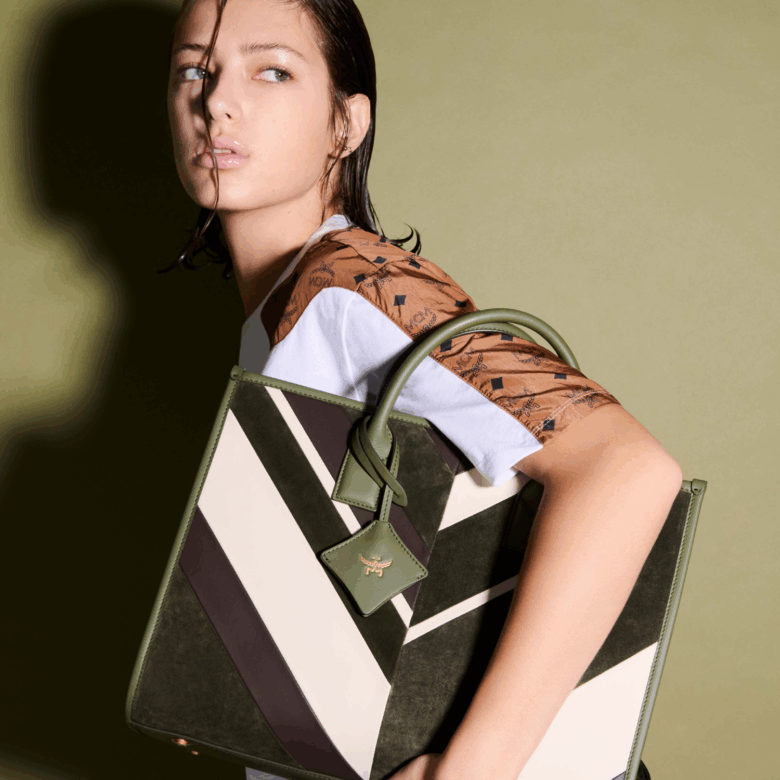How Heineken is battling Seoul’s social isolation problem
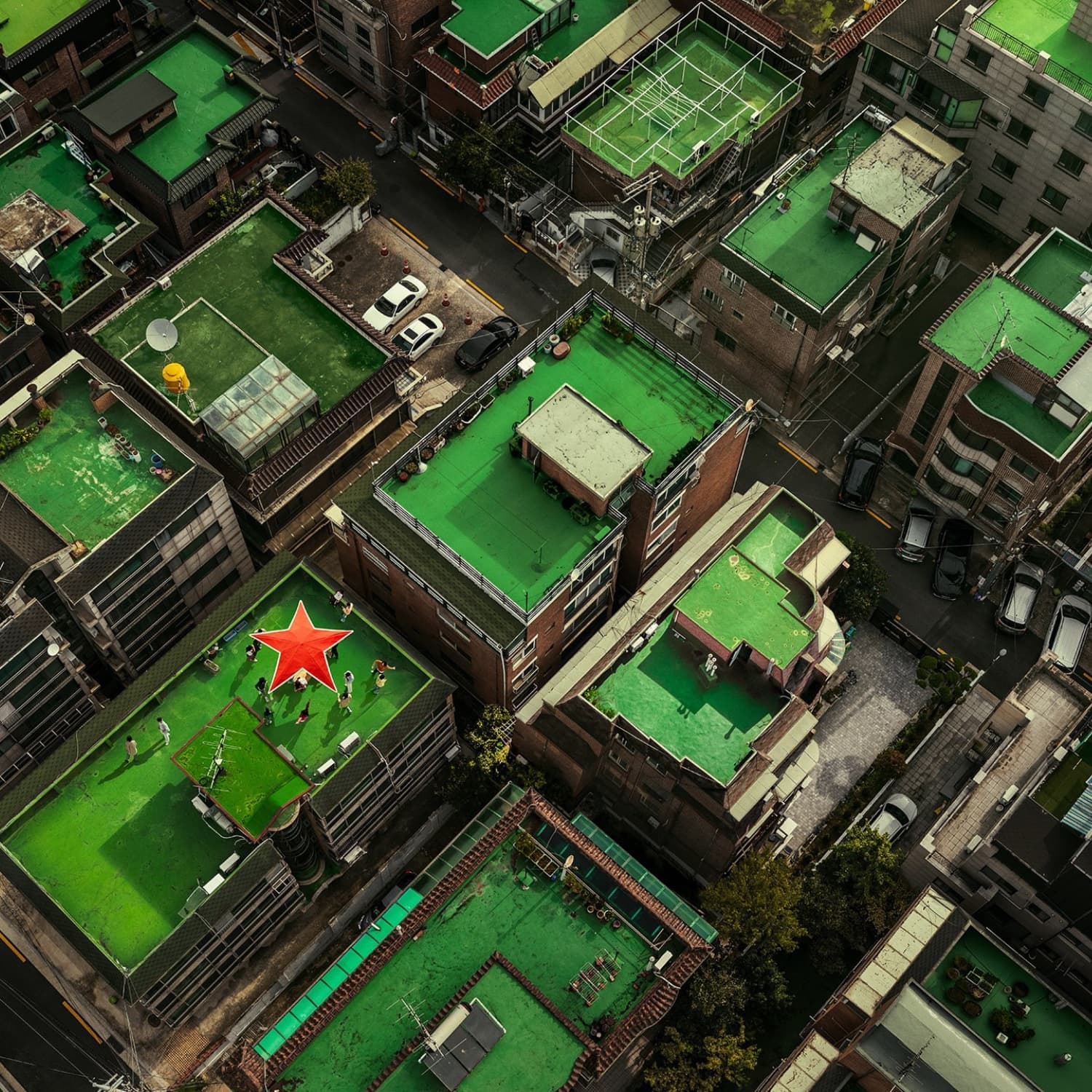
Soaring skylines. Cities that never sleep. Crushing loneliness. These are the sort of contradictions that used to be talked about in therapy sessions, or chalked up to personal failings. That’s until Seoul, and cities like it, made isolation a numbers game. Recently, residents have been learning that population density doesn’t equal connection. It’s a totally different reality to the bustling utopia urban planning promised. No one will offer you a genuine conversation at the coffee shop, or more importantly a sense of belonging, when you’re rushing through a city designed for productivity over people. Living in Seoul may tick the efficiency box, but with an arduous work culture and shrinking social spaces to contend with, the majority of its residents agree that it’s not exactly made for human connection.
Specifically, fifty-three percent of Seoulites say their city is designed for work rather than socialising. It’s the same story in London, Tokyo, New York, Paris and Sydney, where over half the population admit to often feeling lonely. For Korean architect Byoung Soo Cho, understanding urban isolation was about finding a clear diagnosis. He coined the term ‘proximity paradox’ after witnessing people living meters apart but worlds away from each other in any meaningful sense. Now, his framework has given language to what thirty-five percent of major city residents already felt: that their cities actively discourage social interaction. “City life is falling short of social connections,” the architect explains. “In an era where urban environments prioritise productivity over connection and living and socialising spaces are shrinking, there are many forgotten spaces that can become places of renewal.”
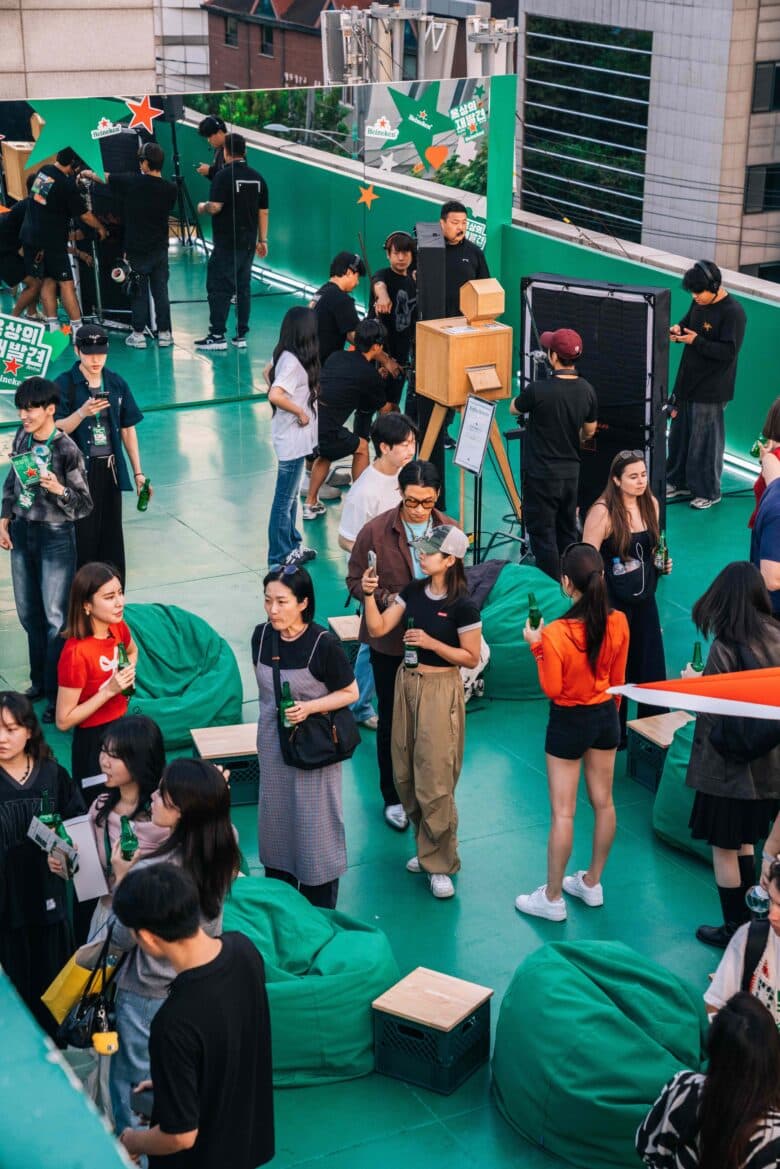
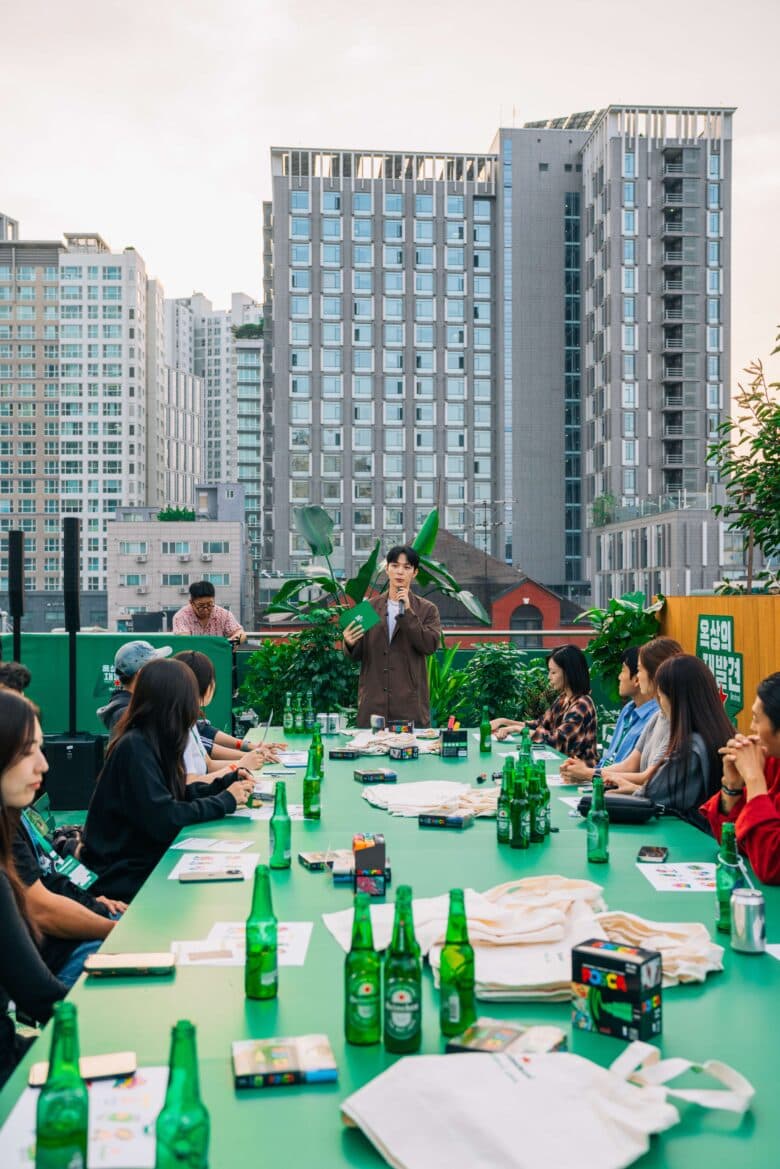
As well as loneliness, the statistics don’t match the expected image of vibrant city life. Heineken’s research actually found that one in three people globally have only met someone new outside work once or twice in six months. With New York ranking lowest for encouraging social interactions (sixty-six percent of survey participants said they were affected), Seoul and Paris aren’t far behind, tying with a quota of forty-nine percent. But it’s important to remember that these aren’t just numbers — they’re people eating dinner alone in apartments stacked on top of each other, scrolling on their phones on packed subway cars, existing in proximity but living in isolation.
That’s where the rooftops come in. Seoul has one of the highest proportions of flat rooftop space in world cities, mostly completely unused and painted green. Heineken, a brand synonymous with this very colour, saw what city planners missed — a naturally blank canvas floating above the ghostly skyscrapers. Working with culture-makers like DINO from K-Pop group SEVENTEEN, contemporary artist Cha Inchul and chef Cho SeoHyeoung, they turned forgotten rooftops into social hubs. The locations of choice were punctuated by red stars using satellite imagery, signalling where these new hubs could be found.
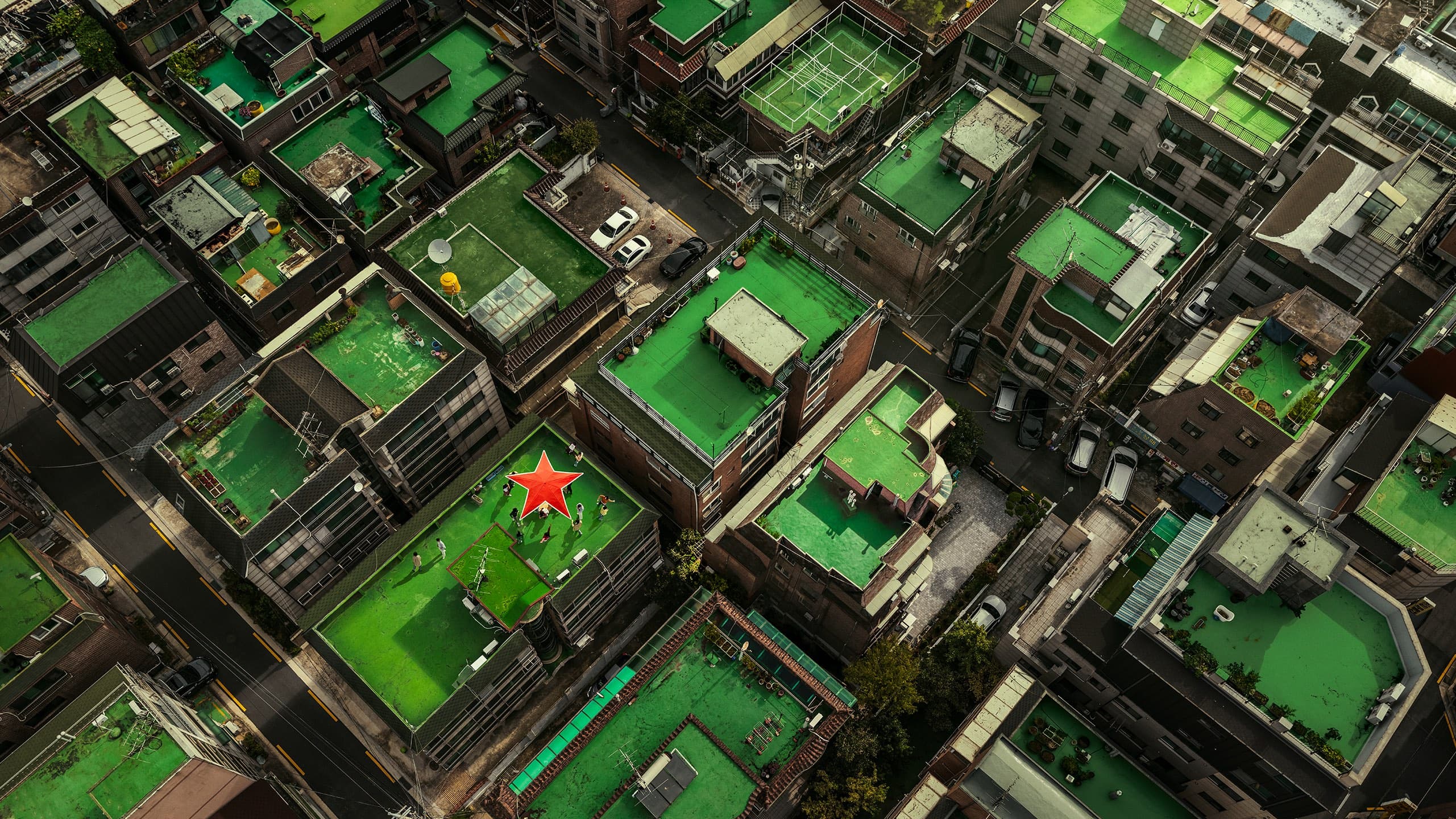
Seoulites tracked down these stars across the city, discovering rooftops converted into venues for actual conversation (and cold beer). Aerial photographer Tom Hegen, known for documenting human impact on landscapes from above, captured the whole thing. “Living in Munich, I know what it’s like to be in a bustling city,” he says. “Despite being surrounded by people, it can often feel lonely. These events are proof that solutions to loneliness don’t always require new infrastructure — just a new perspective to refresh social life.”
If Hegen had seen cities activating unused space while he was feeling isolated, it would have validated that the problem wasn’t personal failure. “It would’ve made a huge impression on me,” he says. It’s the sense that connection isn’t dead, just hiding in plain sight — or perhaps just too high up to see straight away.
- WriterHUNGER writers
